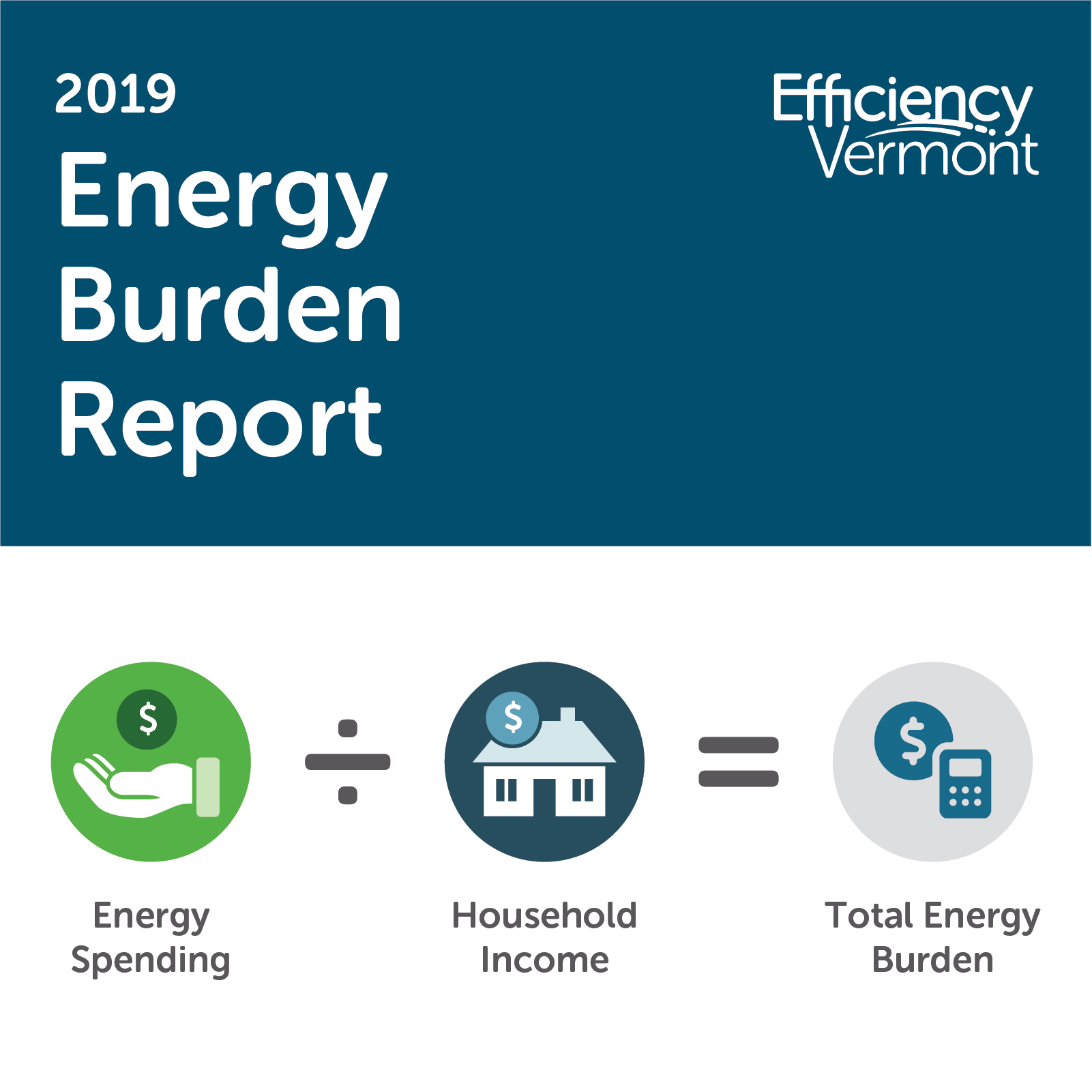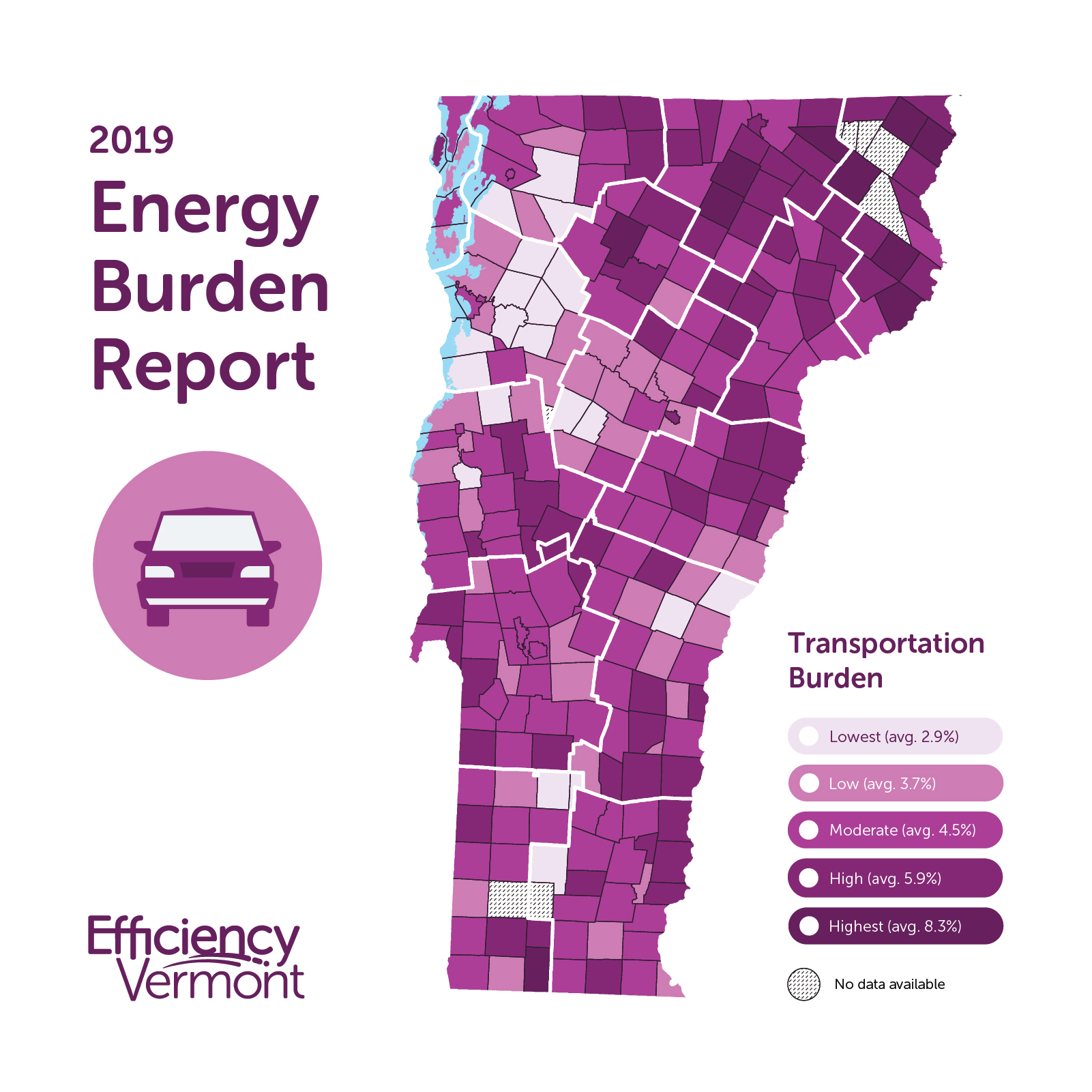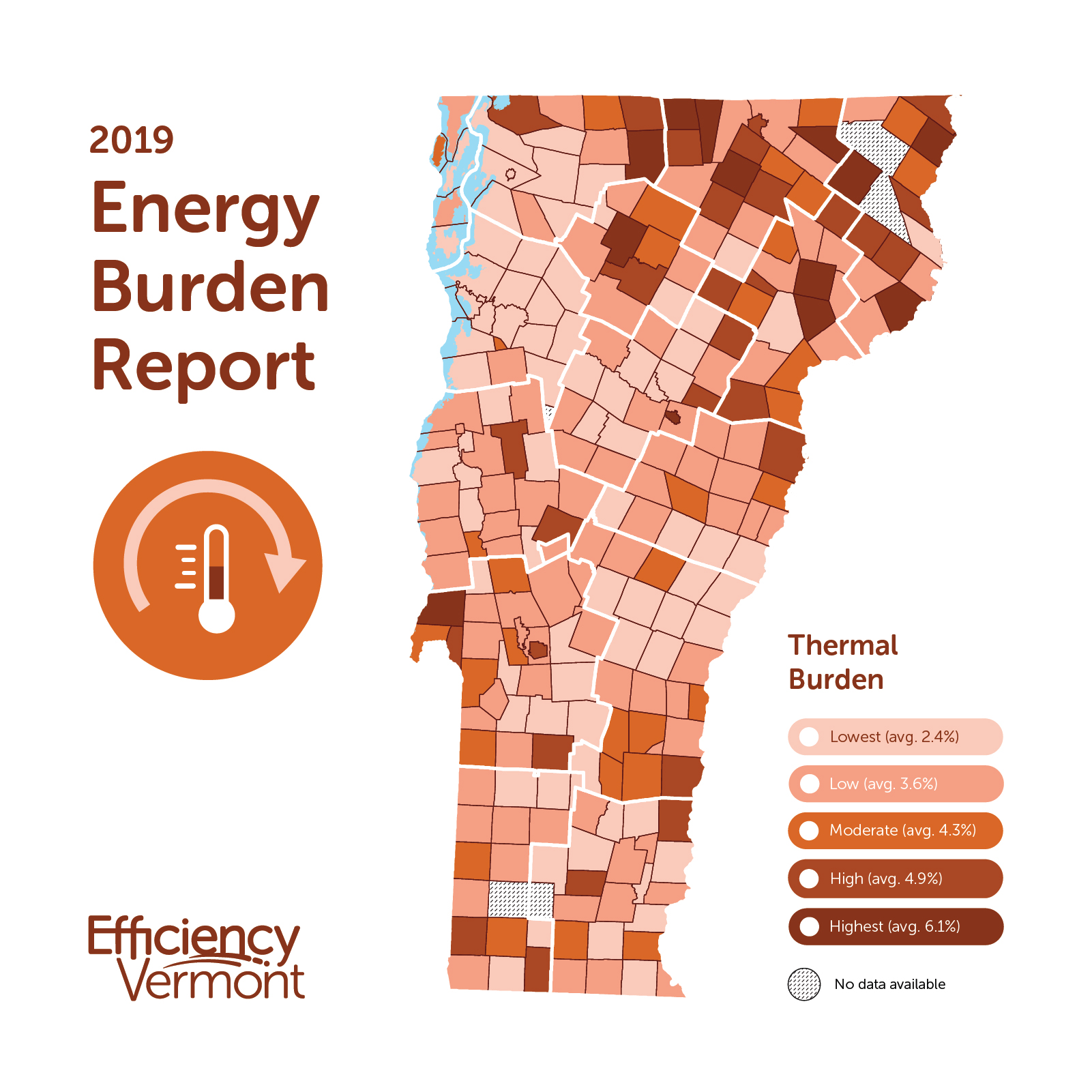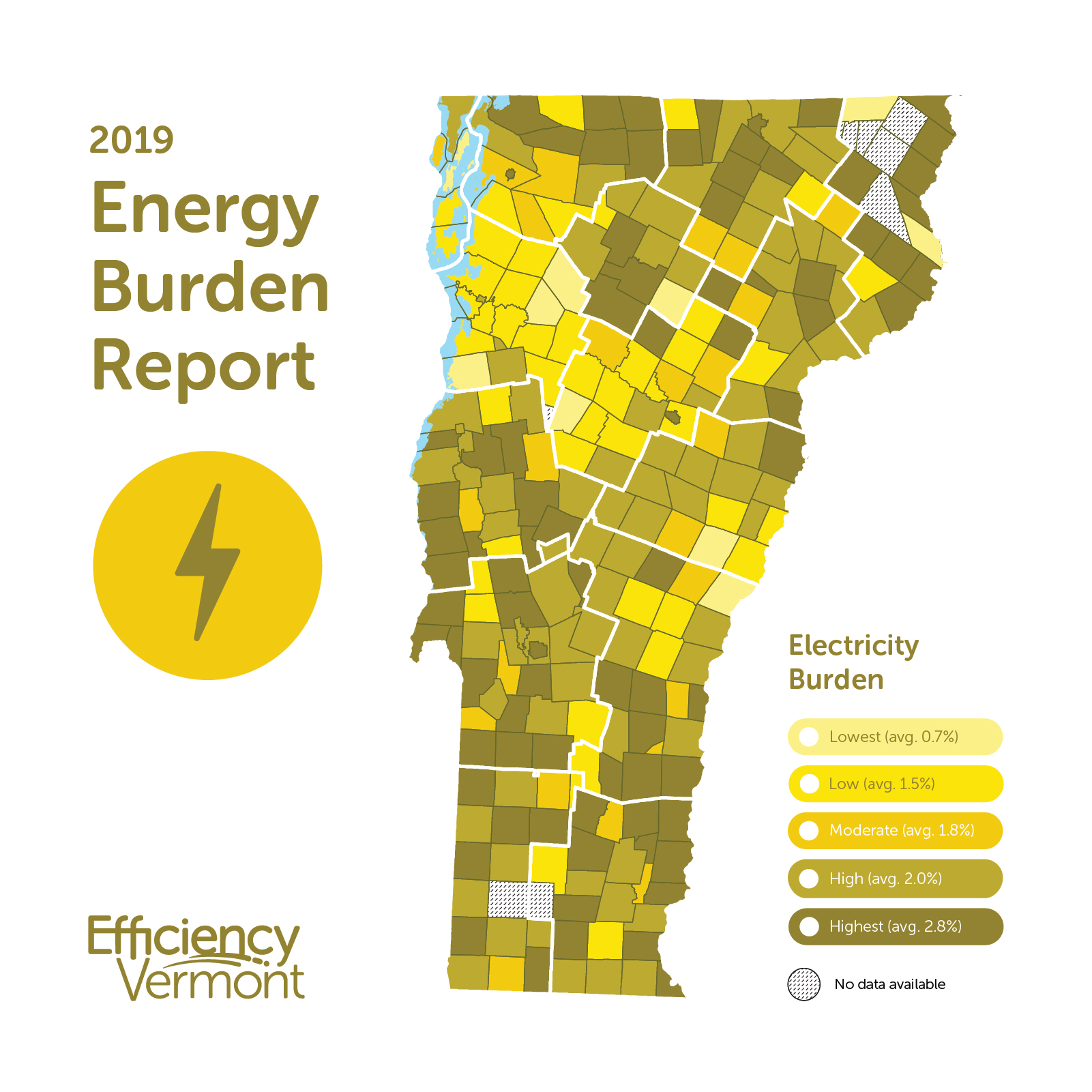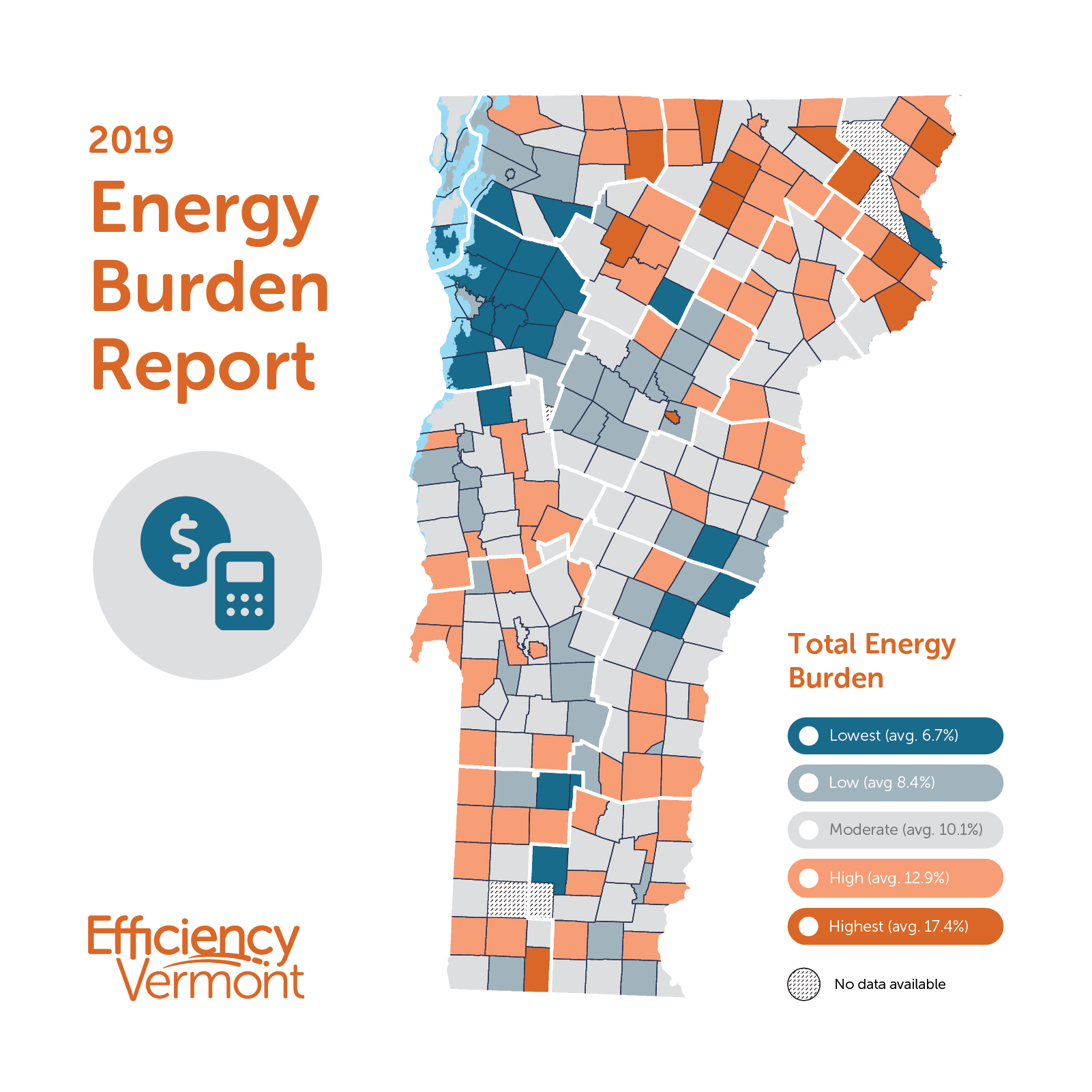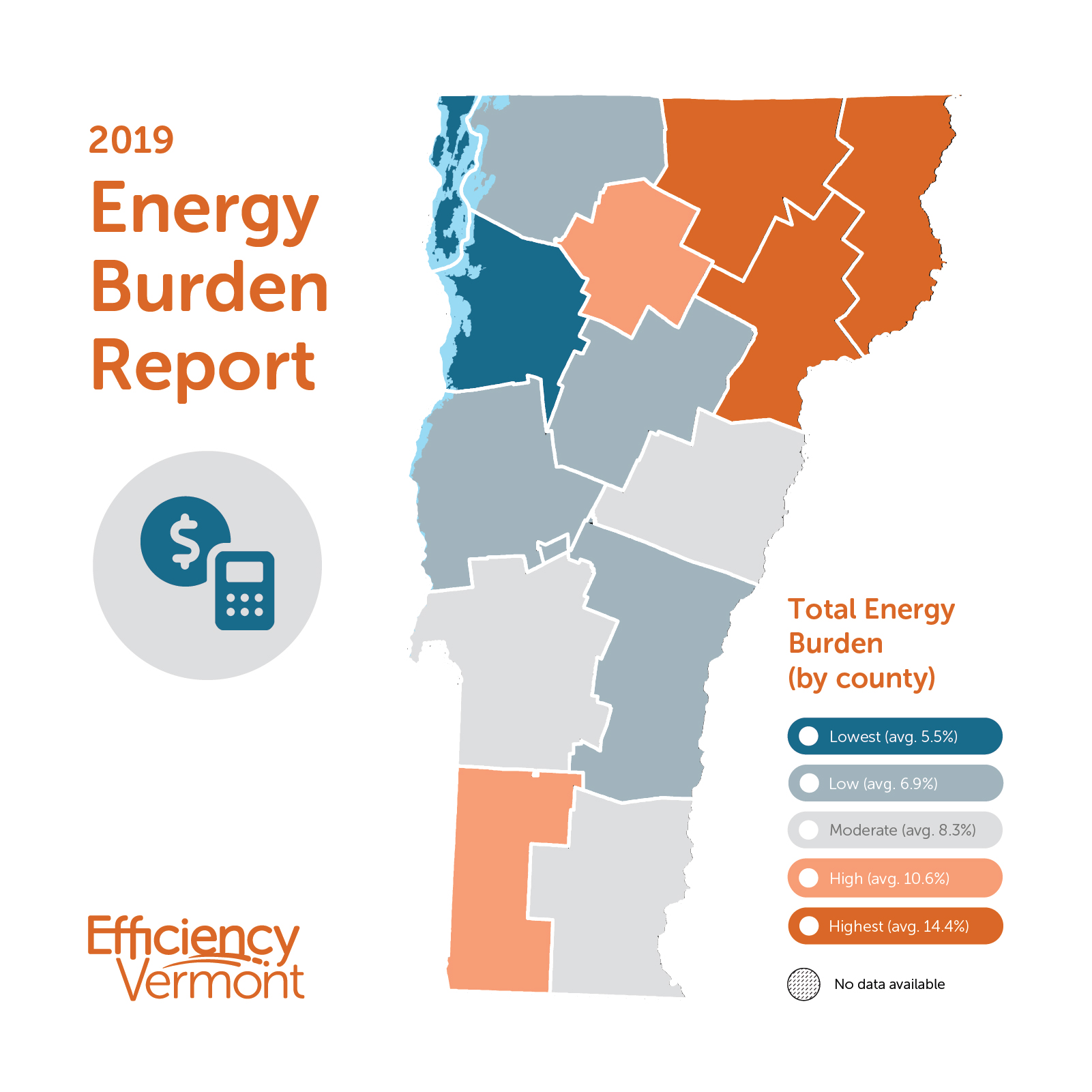Vermont’s 2019 Total Energy Burden by Town
Understanding energy burden, the ratio of energy spending expressed as a percentage of household income, is a powerful way to gauge the impact of energy costs on Vermonters. Energy costs are a significant burden on many Vermont households, competing with other priorities such as housing, healthcare, and food. Energy burden data can inform state energy programs to ensure households with high energy burdens have access to programs that can reduce energy costs and burden.
Read Efficiency Vermont Director Rebecca Foster's blog post on the importance of understanding energy burden.
In 2016, Efficiency Vermont commissioned the first study of Vermont total energy burden. The 2019 report builds on and expands that analysis, providing comparisons of energy burden by town and by sector. For each sector, the report identifies three high-burdened communities, Barre, Irasburg, and Johnson, and identifies programs available in Vermont to reduce energy spending for high burdened households in those communities.
Below, we’ve provided a number of resources to help you understand and utilize this report in your own work. You can download the full report, specific graphics on the results, and the underlying data. Then, take a minute to help get the word out by sharing key results on social media using the toolkit provided.
Download energy burden and spending data by town (XLS)
Share the 2019 Energy Burden Report on social media (PDF)
